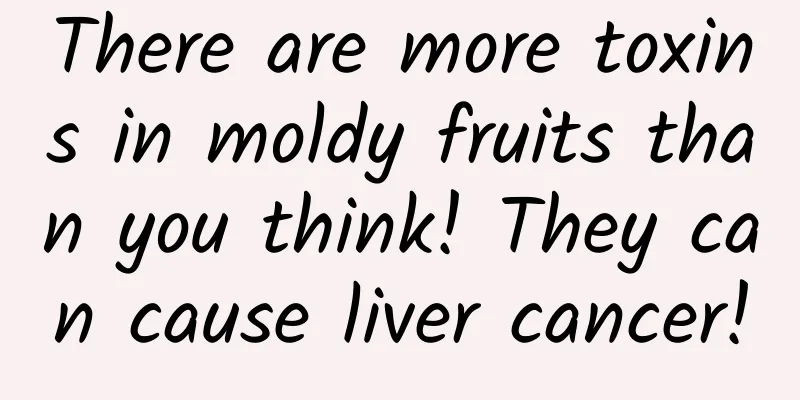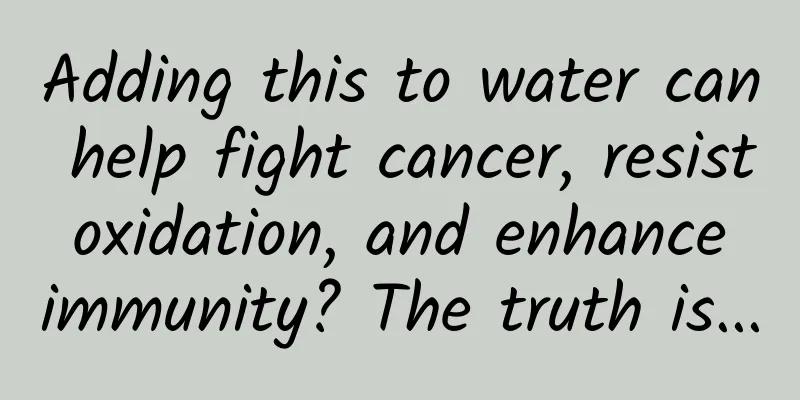There are more toxins in moldy fruits than you think! They can cause liver cancer!

|
Last year, my colleague treated a couple who were diagnosed with liver cancer. Before the diagnosis, the couple first felt tired and weak for no reason, and later developed symptoms of chest tightness, cough, and low-to-moderate fever. Even then, the couple still didn’t pay enough attention to it, and even thought it was caused by too much work and lack of rest recently. It was not until they both lost weight and had pain in the liver area that they remembered to go to the hospital for a check-up. In the hospital, the couple were both diagnosed with liver cancer. Surprisingly, the cause of the disease may be related to fruit. The couple likes to eat fruits and always buys a lot at one time. They even buy fruits that are partially rotten in order to save money. After returning home, they cut the rotten parts and eat the rest. Little did we know that a seemingly frugal habit would actually harm ourselves. Some people may want to ask, is it really that serious to eat moldy fruit? Of course it’s serious! If you don’t believe it, keep reading! There are more toxins in moldy fruits than you think! The reason why fruits are easy to rot is that most fruits are high in juice, sugar and nutrients, and this environment is very suitable for the reproduction of mold. The most common toxins in fruits that need attention are: Patulin (PAT) produced by Penicillium patulinum Ochratoxin A (OTA) Among them, PAT belongs to Class 3 carcinogens, and OTA belongs to Class 2B carcinogens. Although not as carcinogenic as Class 1 carcinogens, existing evidence shows that PAT can damage the intestines, impair kidney function, and contaminate fresh fruits and juices. OTA is not a good thing either. It is not only nephrotoxic but also hepatotoxic. If you are hoping that not all rotten fruits contain these two toxins, I advise you to give up this idea. Because most rotten fruits contain patulin and ochratoxin A! Of course, the "power" of these two toxins is already very small, and the really "powerful" ones are coming later. For example, the toxin of the fungus Nyssopus, which is often found in rotten sugarcane, is a known strong carcinogen. There is also aflatoxin present in rotten dried fruits. This is not only a Class 1 strong carcinogen, but also 68 times more toxic than arsenic! If the fruit is rotten, can I cut off the bad part and eat the rest? This is not recommended! Why? Because this is a technical job that requires extremely strict skills, no one can guarantee whether the toxin has spread. Even if it has not spread, there is no guarantee that all the toxin can be removed. More importantly, most of the rot occurs inside the fruit, which is invisible to the naked eye. In addition, the juice inside the fruit is often circulating, and the toxins may have spread along the juice. For example, the number of fungi in the rotten part of the peach below is 82,500: The number of fungi that appeared intact and without any rotten parts was as high as 53,100: Therefore, if there is any rotten part in the fruit, you must throw it away. Don’t gamble with your health; no one can afford it! These two rotten fruits can be eaten! Not all rotten fruits are inedible. We still need to see what causes them. For example, the following two kinds of fruits can be eaten even if they are rotten. ① Mechanical injury (bruise) Fruits are inevitably squeezed and collided during picking, transportation and sales, which can cause damage to the fruit skin. It is completely safe to eat fruits that are damaged due to external forces, because this only affects the appearance of the fruit and will not produce microorganisms or toxins. Many people are curious, can it still be eaten if it is damaged and changed color? It is also edible. In fact, it is the dissolution of the fruit cytoplasm, and the colorless phenolic substances are converted into colored quinone substances in this process. ② Low temperature injury (frostbite) When the temperature is relatively low, the activity of superoxide dismutase in the fruit will decrease, and the free radicals in the cells will not be removed in time. When the free radicals accumulate to a certain level, the permeability of the fruit cell membrane will change. In addition, a low temperature environment will also increase the activity of pectinesterase in the fruit. Pectinesterase will decompose the insoluble pectin substances in the fruit, and the fruit will become soft or rotten. To sum up, there is no microbial reproduction in frozen fruits, only the cells are damaged. They can be eaten, but they must be eaten as soon as possible. But we must remind you that you must distinguish clearly which fruits are damaged by external forces or frostbitten, and which are spoiled and rotten fruits. Now many fruit stores will sell moldy fruits at low prices, deliberately concealing the mold and rot. There are even some milk tea shops that use rotten fruits to make fruit tea. In August last year, the media broke the news that "Nayuki's Tea" used rotten fruits. Everyone must pay attention! Be careful of these moldy foods that can easily cause poisoning! ① Moldy sugarcane Moldy sugarcane will produce neurotoxins and damage the human central nervous system and digestive system. People will experience poisoning symptoms within 2-8 hours of eating it. When the symptoms are severe, symptoms of neurological poisoning may occur, such as incontinence, convulsions, etc. If not treated in time, the patient may develop into a vegetative state or even die. Therefore, if you see sugarcane with dull skin, soft texture, dark flesh, dark gray spots, or that smells like "wine lees", do not buy or eat it! ② Moldy eggs The eggshell itself has a protective film on the surface, if the egg is damp or wet, this protective film will be washed away. At this time, bacteria will enter the egg and cause the egg to deteriorate. Therefore, if black spots appear on the surface of the eggshell, do not eat it. ③Moldy peanuts and melon seeds When we eat peanuts, melon seeds and other nuts, if we suddenly eat a very bitter one, it is actually moldy. The bitter taste comes from the notorious aflatoxin. As we have mentioned before, aflatoxin is a Class I carcinogen and is often listed among the high-risk factors for liver cancer. It is also very easy to identify. If the kernels of melon seeds, peanuts, pine nuts, etc. turn yellow or black and taste bitter; if yellow-green mold grows on the surface of grains and corn, or if they are damaged, discolored, or wrinkled, do not eat or buy them. In addition, when purchasing bean paste and fermented tofu, if you find that the packaging is damaged or the bottle cap is floating, do not buy it. |
<<: The Transformation of the Shenzhou Orbital Module
>>: The intestines can determine the brain. Our cognition has been overturned again, right?
Recommend
Analysis of the principle of Choreographer screen refresh mechanism
[[439195]] This article is reprinted from the WeC...
Foshan mini program production and customization development, what are the processes for developing a mini program?
After the fifteenth day of the first lunar month,...
Desktop IT outsourcing services are booming, with a market value of tens of billions growing rapidly
IT outsourcing services in China have entered a s...
Why did Volkswagen pay a huge compensation of 14.7 billion US dollars? Was it their own fault or was it slaughtered?
In fact, the basic framework of compensation had ...
4 principles to help you write copy that can leverage user cognition!
"Hey, this should work." Xiao Zhang was...
What are the functions of the building materials mini program? How much does it cost to create an online building materials mall mini program?
Yesterday a customer consulted me and asked if I c...
Self-media communication made "The Monkey King: Hero is Back" a box office miracle
When Lost in Thailand suddenly became popular for...
What are the origins of these BOTs? Let's take a look at the technological "secrets" of the Spring Festival Gala robots dancing Yangko
Wearing small flowered jackets, waving red handke...
A guide to avoiding pitfalls when placing ads on Weibo and WeChat!
There was an article that went viral this morning...
The reason for Baidu's bidding account being suspended was suspected of privacy theft. What does batch rejection mean?
(1). This may be because Baidu has detected some ...
More than 300 expressions! Cats are not as cool as you think
Science and Technology Daily, Beijing, November 1...
Artificial intelligence, “abandoning” real data sets?
Currently, artificial intelligence technology has...
Musk and Hawking, concerned about artificial intelligence, were awarded the Prize for Opposing Technological Progress
[[162215]] You wouldn’t think of Elon Musk and St...
Analysis | Why is it becoming increasingly difficult to make Internet products?
Recently, Andrew Chen, head of user growth at Ube...
Is there a solution to WeChat's space occupation? Experience WeChat's official cleaning function
If we talk about the apps that consume the most m...








![[Beautiful article] This is how the first batch of users of Didi, Momo, and Meituan came from!](/upload/images/67cc19f355c54.webp)
